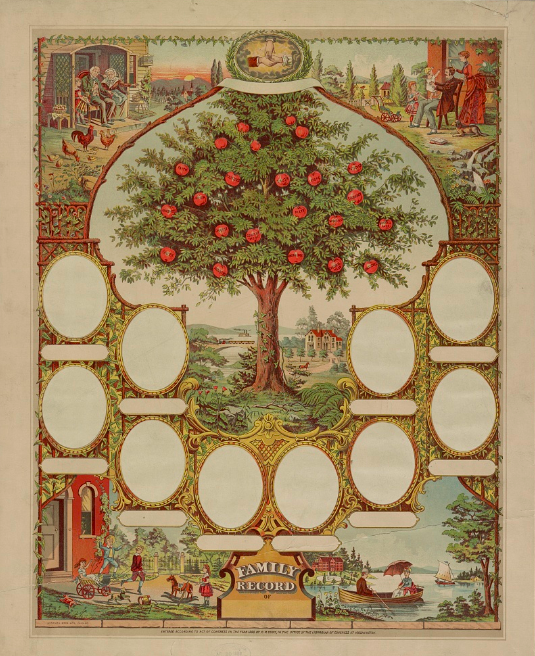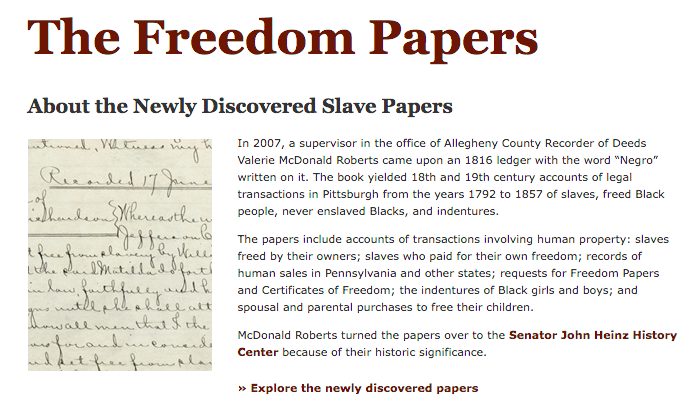Build your family tree
Audience
K-5
Background
With so many historical records being digitized, everyone can be their family’s genealogist! This activity encourages students to start with their immediate family members and see how much of their family tree that they can build using everything from local to online archives.

Objectives
- Encourage students to connect with their ancestry
- Learn how to analyze historical data to find their ancestors
- Connect with history through their own family’s experiences
Activity
All students, regardless of age/grade:
- Talk to your immediate family members.
- Write down your family members:
- Name – First, Middle, and Last
- Birthday – DD MM YYYY
- Birthplace – City, State, Country
- Relationship to you – mother, father, brother, etc.
For K-1
PBS has a great learning activity for younger students that includes a short video of Daniel the Tiger, along with worksheets that guide both educators and students through the process of building a family tree.
For K-5
EDSITEment provides a lesson that takes building a family tree a step farther by teaching students how to research their heritage via their ancestral homeland.
The Fugitive Slave Act of 1850
Audience
Grades 6-12
Background
The Fugitive Slave Act of 1850 permitted the federal government to return any enslaved persons to their enslavers, even if they were found in a free state. PBS put together a lesson for students in grades 6-12 that uses their series, Mercer Street, to teach about the Fugitive Slave Act of 1850.
The History Channel also has a short overview video where historian and university professor, Matthew Pinsker, orients students to this particular moment in history.
Objectives
- Study the Fugitive Slave Act of 1850
- Consider how it affected enslaved persons
- Think about it influenced the abolitionist movement in the United States
Activity
Source: PBS | Mercy Street | Fugitive Slave Act 1850
- Watch the three Mercer Street videos on the PBS website.
- Answer the discussion questions.
- Complete the activity provided in the Support Materials for Teachers box.
Think like a historian

Audience
Grades 11-12
Background
The Jackson Family project started with one document captured in a digital history exhibit created at the University of Pittsburgh. The historical data provided in this one document opened up paths for additional research that historians are still exploring. Piecing together this family’s story started with a trail of breadcrumbs – a name here, a date there.
In this activity, students use the tactics that historians at Belle Grove used to find the Jackson family.
Objectives
- Analyze primary sources
- Conduct genealogical research
- Make informed decisions using historical data
Activity
- Watch the overview video on the Freedom Papers.
- Click the Explore the newly discovered papers here link under the video.
- In the column along the right side of the page, pick a name from the list of freedom papers, which also include indentured or bound persons, too.
- Once you select the person you wish to research, analyze everything you know:
- Who’s mentioned in their freedom paper? Write down all of the names.
- What locations are mentioned? Where was their freedom granted?
- In what year did they get their freedom?
- Once you’ve gathered as much information as you can from the freedom paper you selected, you can get started on your ancestry search. There are several ancestry websites you can use, from Ancestry.com to FamilySearch.org. Many local libraries have accounts that you can use for free to conduct this part of your research.
- After you log into the ancestry website of your choice, start to plug in the historical data that you collected from the freedom paper and see what you find and where your research takes you. Remember that one of the keys to success is cross-checking your names, dates, and places to see if they align.
Good luck and have fun!